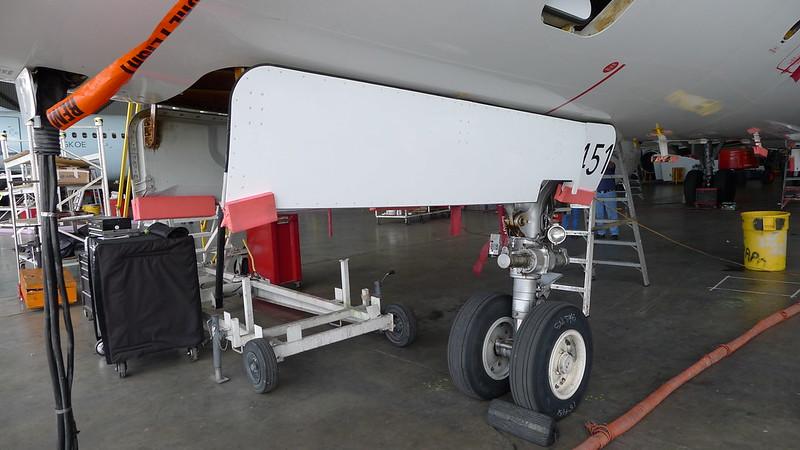
Unifying regulatory guidance into a single volume would benefit both repair stations and FAA personnel that oversee them while ensuring guidance is both complete and aligns with agency rules, an industry working group concluded.
Developing the master “acceptable means of compliance (AMC)” document is the top recommendation among several made to the FAA in a final report prepared by the The Aviation Rulemaking Advisory Committee (ARAC) Part 145 working group delivered in late 2022. The agency confirmed in a Jan. 8 letter that it officially received the report—a formal step in the ARAC process.
“The FAA will keep ARAC apprised of the FAA’s efforts to address recommendations,” wrote FAA Office of Rulemaking Executive Director Brandon Roberts in a letter to ARAC chair David Oord, a policy manager at urban air mobility company manufacturer Wisk.
The working group’s task, assigned in late 2017, was to review all guidance linked to certifying and overseeing FAA Part 145-approved repair stations. The review included both FAA internal documentation, such orders and notices, as well as advisory circulars (ACs) meant for industry. It also included a review of data collection tools (DCTs) used FAA’s safety assurance system, designed to help the agency identify potential safety risk, and tailor audits and other surveillance activity accordingly.
Among the review’s conclusions: the AC and internal notice process, launched formally in 1962, has created a set of compliance information that often conflicts with the regulations.
“Internal orders diverge significantly from the plain language of the regulation,” the final report said. “The rules are performance-based while the guidance is prescriptive.”
The DCTs are following a similar path, the group found. The tools “are being used as the de facto standard for certification and surveillance even though only [20%] cite a regulation,” the report said.
The working group asked the FAA to formally task it with creating a draft ACM. The group began the process as part of its original work but did not complete the draft within its allotted time frame.
“The AMC creates a transparent method of imparting information to applicants, certificate holders, agency personnel, and the public,” the working group said in its report. “It includes the language of the regulation, its scope or intent, an acceptable means of compliance for the applicant or certificate holder, how the agency handles the data it collects or is required to review, and additional explanations or background to help aid compliance, certification, and oversight.”
The group also recommends that FAA fine-tune the SAS data-collection process, differentiating between “compliance elements” and “risk indicators.” The former should “directly” link to the “plain language of an applicable regulation,” and be relied upon for showing compliance for issuing certificates.
Risk indicators “are those that may, depending upon the amount, type, scope, and complexity of work performed and the certificate holder’s size, show a need to increase the agency’s oversight,” the working group said. These, it added, should only be used “during surveillance planning.”
The group also recommends new training for FAA inspectors that supports the AMC, including lessons on “the history, intent, and expected results for the certification and oversight of repair stations.”
Working group membership includes representatives from about 20 aircraft, engine, and component manufacturers as well as dedicated repair stations, labor groups and industry associations. Aeronautical Repair Station Association Executive Director Sarah MacLeod and Aircraft Electronics Association VP of Government and Regulatory Affairs Ric Peri are the Part 145 working group’s co-chairs.





